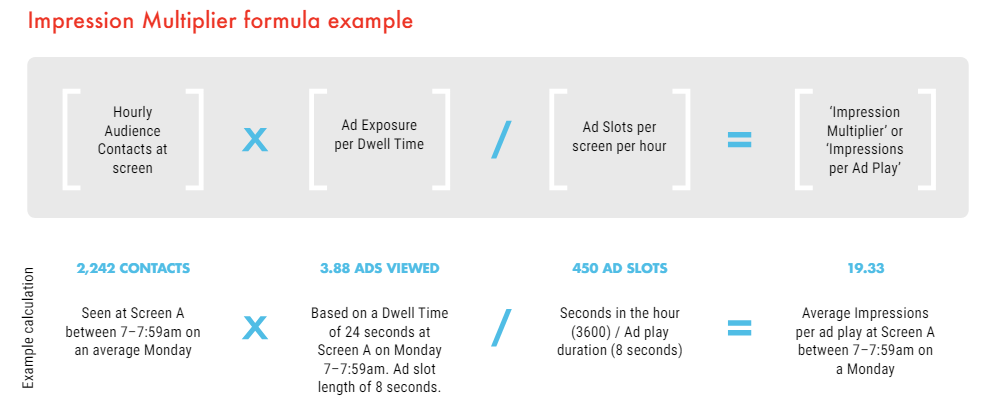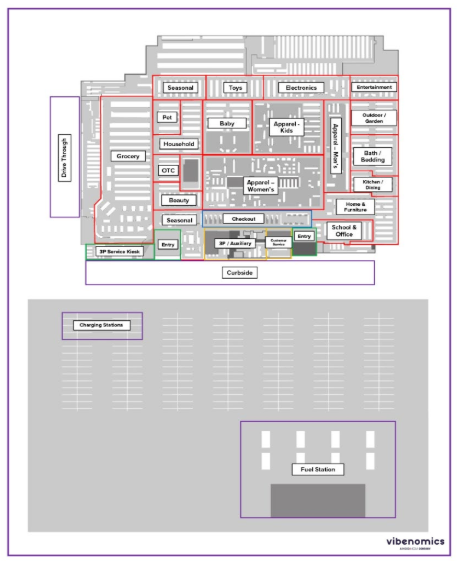In-Store Advertising
Industry Insights
Retail Media
In the rapidly evolving world of retail media, understanding how to measure and optimize in-store advertising is crucial. Chapters 3 and 4 of the IAB’s Digital Out of Home (DOOH) & In-Store Retail Media Playbook offer deep insights into defining in-store retail media metrics and comprehending the complexity of in-store impressions. This blog provides essential guidance for brands and retailers aiming to enhance their in-store marketing strategies.
Holistic and Focused Measurement
“When considering the measurement of in-store activity, it needs to be considered as both a single-focus (measuring the impact of the tactic in consideration), as well as holistically—how the in-store activity performs in relation to the full omnichannel marketing activity. The in-store activity not only needs to be considered as part of the whole, but also how it impacts and is impacted by other out-of-store and online activity.”
Measuring in-store activity requires a dual approach:
Both approaches are essential for a comprehensive view of marketing effectiveness, ensuring in-store activities align with onsite and offsite efforts.
Measurement Methodologies
“As retail media evolves, measurement and optimization remain at the forefront, ensuring that strategies not only resonate with consumers but also drive measurable results.”
There are two primary methodologies for measuring audience exposure to in-store retail media advertisements:
“The metrics we analyze and consider in evaluating performance have to be thought about from each of these points of view, as well as to the overall experience of the shopper with the tactic – which will impact everyone.”
Accurately measuring the effectiveness of in-store campaigns involves several metrics:
The Impression Multiplier is a factor applied to ad play counts to estimate the number of shoppers exposed to an ad. It considers:
This multiplier provides a more accurate count of meaningful impressions, enhancing ROI analysis, strategic content placement, and customer engagement.
“Each Screen or Media Device should be assigned a unique Impression Multiplier based on a number of factors including Venue and Zone foot traffic, field of view, and exposure time, and may additionally vary based on the time of day.”
The impression multiplier is found using the following:

By applying the impression multiplier, brands can:
“With the application of an Impression Multiplier, retailers and brands can achieve a more nuanced understanding of their in-store advertising performance.”
Each retail venue is divided into zones to refine the physical location of media and differentiate contextual exposure to shoppers. Zones are classified to ensure consistent measurement and comparison across different retailers.
“Zones must be overlayed to allow for Exposure and Dwell Time to be applied through location-based foot traffic, screen specific sensors, or other verifiable positioning technology.”

Various technological solutions are available (In-Store Communication, Digital Out of Home, Retail Media, and End-cap/Self Activation) for enhancing retail operations and advertising strategies. Below are key measurement considerations for those technologies:
“The decision to implement any of these technologies rests solely with the retail owner. Each retailer may adopt these technologies based on their specific needs and strategic goals.”
Beyond simple impression counts, measuring engagement quality and interaction with in-store media offers valuable insights into consumer interest and campaign performance. Metrics such as dwell time, interaction rates with touchscreens, QR code scans, and responses to audio messages should be considered across all formats. These metrics help in understanding how many consumers are engaging with the content and how deeply they are engaging with it, providing a basis for optimization and creative refinement, but how deeply consumers are engaging with the content, providing a basis for optimization and creative refinement.
Understanding and accurately measuring in-store retail media is vital for optimizing marketing strategies. By leveraging the insights and methodologies outlined in Chapters 3 and 4 of the IAB’s DOOH & In-Store Retail Media Playbook, brands and retailers can enhance their in-store advertising efforts, driving better engagement and higher ROI.
Be sure to check out Vibenomics’ latest whitepaper, In-Store Impressions Unlocked, to discover how to overcome inconsistent measurement methods to navigate in-store audiences and gain accurate audience insights!
Vibenomics, a Mood Media Company, is the leading in-store digital provider with an in-store network that reaches over 170 million monthly unique shoppers and 1 billion monthly shopping visits in the United States. Our platform provides a single, all-in-one retail media network, empowering advertisers to deliver an on-premise experience and connect with consumers via display, audio, and experiential channels.
Ready to elevate your retail media strategy with in-store audio? Click here to engage with Vibenomics today.